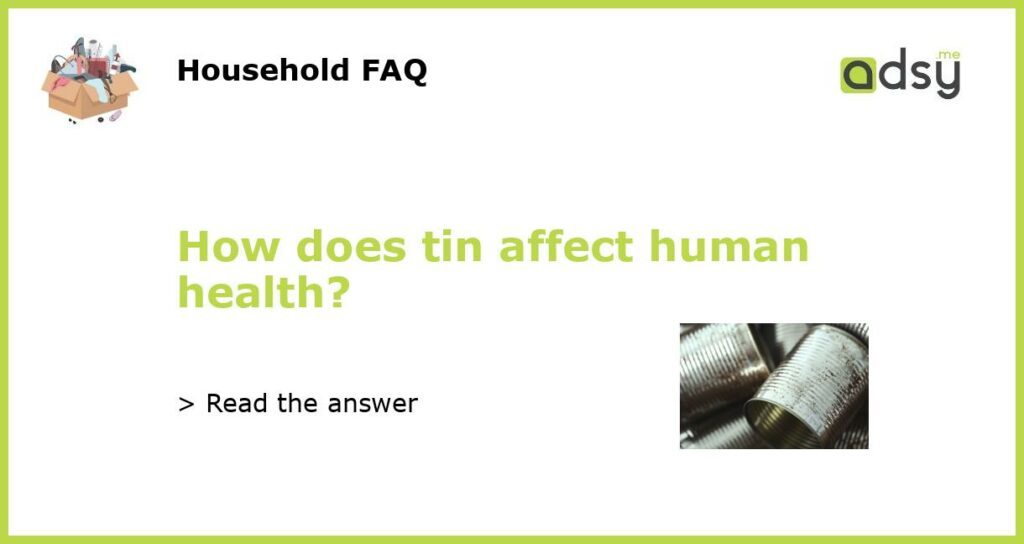What is Tin?
Tin is a chemical element with the symbol Sn and atomic number 50. It is a silvery metal that has been used for thousands of years in various applications, ranging from making containers to soldering electronic components.
Sources of Tin Exposure
There are several ways in which humans may be exposed to tin. The most common source is through the food we eat. Tin can be found in small amounts in fruits, vegetables, grains, and seafood. It is also used in food packaging, such as tin cans and tin foil, which can result in small amounts of tin leaching into the food.
Tin can also be released into the environment through industrial processes, such as smelting, mining, and manufacturing. People who work in industries that use tin may be exposed to higher levels of the metal, either through inhalation or skin contact.
Health Effects of Tin Exposure
Tin is generally considered to be a non-toxic metal, and exposure to low levels of tin is not known to cause any adverse health effects in humans. In fact, small amounts of tin are essential for the proper functioning of our bodies. Tin is a component of enzymes and proteins that are involved in various biological processes.
However, exposure to high levels of tin can have negative health effects. The most common health effects associated with high levels of tin exposure include stomach and intestinal problems, such as nausea, vomiting, and diarrhea. In severe cases, it can lead to more serious conditions, such as liver and kidney damage.
Occupational Exposure to Tin
Workers in industries that involve the production or use of tin may be at a higher risk of exposure to elevated levels of tin. Inhalation of tin dust or fumes can occur during processes such as smelting, welding, or soldering. In addition, direct skin contact with tin or its compounds can also lead to absorption of the metal into the body.
Occupational exposure to high levels of tin has been associated with a condition known as “tinosis” or “tin fever.” This condition is characterized by flu-like symptoms, such as fever, cough, and chest congestion. Prolonged or repeated exposure to high levels of tin can also lead to more serious respiratory problems, such as chronic bronchitis or pneumonitis.
Regulatory Limits on Tin Exposure
To protect public health, regulatory agencies around the world have established limits on the acceptable levels of tin exposure in various settings. For example, the World Health Organization (WHO) has set a provisional tolerable weekly intake (PTWI) of 14 mg of tin per kilogram of body weight. This is the amount of tin that a person can safely consume on a weekly basis without experiencing adverse health effects.
In the workplace, regulatory agencies such as the Occupational Safety and Health Administration (OSHA) in the United States have set permissible exposure limits (PELs) for tin and other hazardous substances. These limits are designed to protect workers from the health risks associated with exposure to high levels of tin.
It is important for individuals to be aware of the potential risks of tin exposure and to take necessary precautions to minimize their exposure. This includes following safe practices in the workplace and being mindful of the types of food packaging materials used.






